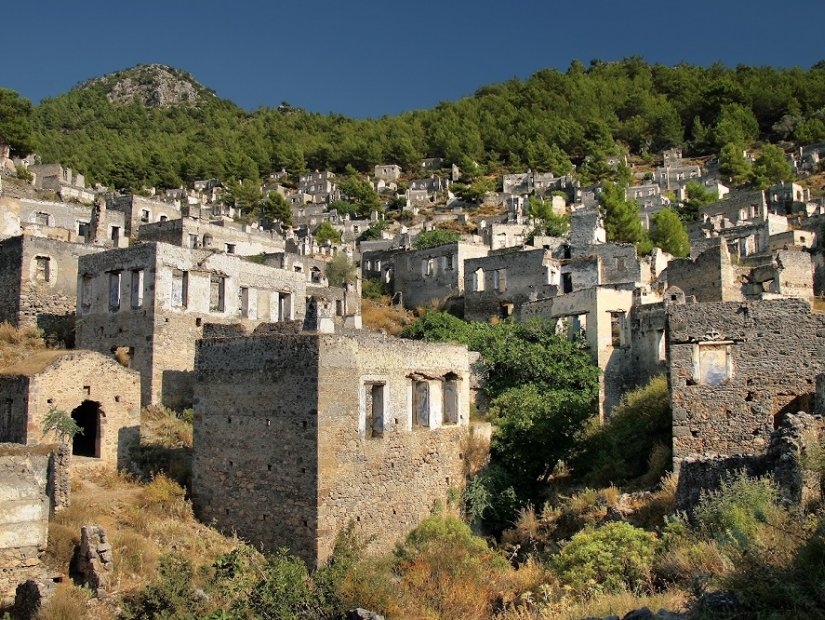Blog
A Ghost Town: Kayakoy
A Ghost Town: Kayakoy
A Ghost Town: Kayakoy
The abandoned remains of this once-thriving town are situated against the Taurus Mountains, near Olu Deniz's world-famous beaches and yacht-filled port. Although the stone buildings are aged and roofless, and the narrow alleyways are worn with age, this is not an ancient city, but a modern ruin deserted for political reasons in the 1920s.
Kayaköy's first human activity dates to the 4th century BC when it was known as Karmylassos. Its population mostly comprised of Christian Greeks from the 11th century BC.
Kayakoy was once home to around 10,000 people, including Anatolian Muslims and Greek Orthodox Christians, within a thriving and harmonious community. The Greeks called the village Levissi while the Turks called it Kayakoy.
Outside their religions and schooling, the Greeks and Turks integrated with each other, sharing the same objective of getting through life one day at a time.
However, after the end of the Greco-Turkish War, the town was forcibly abandoned as a result of a population exchange in which Muslims and Christians were traded between Greece and Turkey so that each country might claim one major religion on the road to ethnic and national homogeneity.
As a result, more than 6,000 Christians left their beautiful homes and churches behind. During the 1923 population exchange, approximately 200,000 Greeks and 300,000 Turks were uprooted, and they had to acknowledge a brand new place of settlement.
The former residents of Levissi came to Greece roughly 40 kilometers from Athens and quickly settled in an area that reminded them of most of their previous homes. The recently arrived Muslims from Greece, on the other hand, did not move to Kayakoy due to its hilltop location, which they considered too isolated. A strong earthquake struck the lovely but abandoned town in 1957, causing considerable damage to the buildings. The hillside homes, schools, chapels, churches, businesses, and cafés, which were left undisturbed, still stand today, albeit weakened by the natural elements, as if to protest their abandonment.
The ghost village is now one of Fethiye's most popular tourist destinations. It is an open-air museum, with over 500 preserved houses and three churches. The Basilica of Panayia Pyrgiotissa (constructed in 1888) is the largest and is positioned on the right side of the main street - it is difficult to miss this spectacular Gothic structure. A few locals sell food and souvenirs to passing tourists and there are some occupied houses away from the main bunch of deserted properties on the hill.


